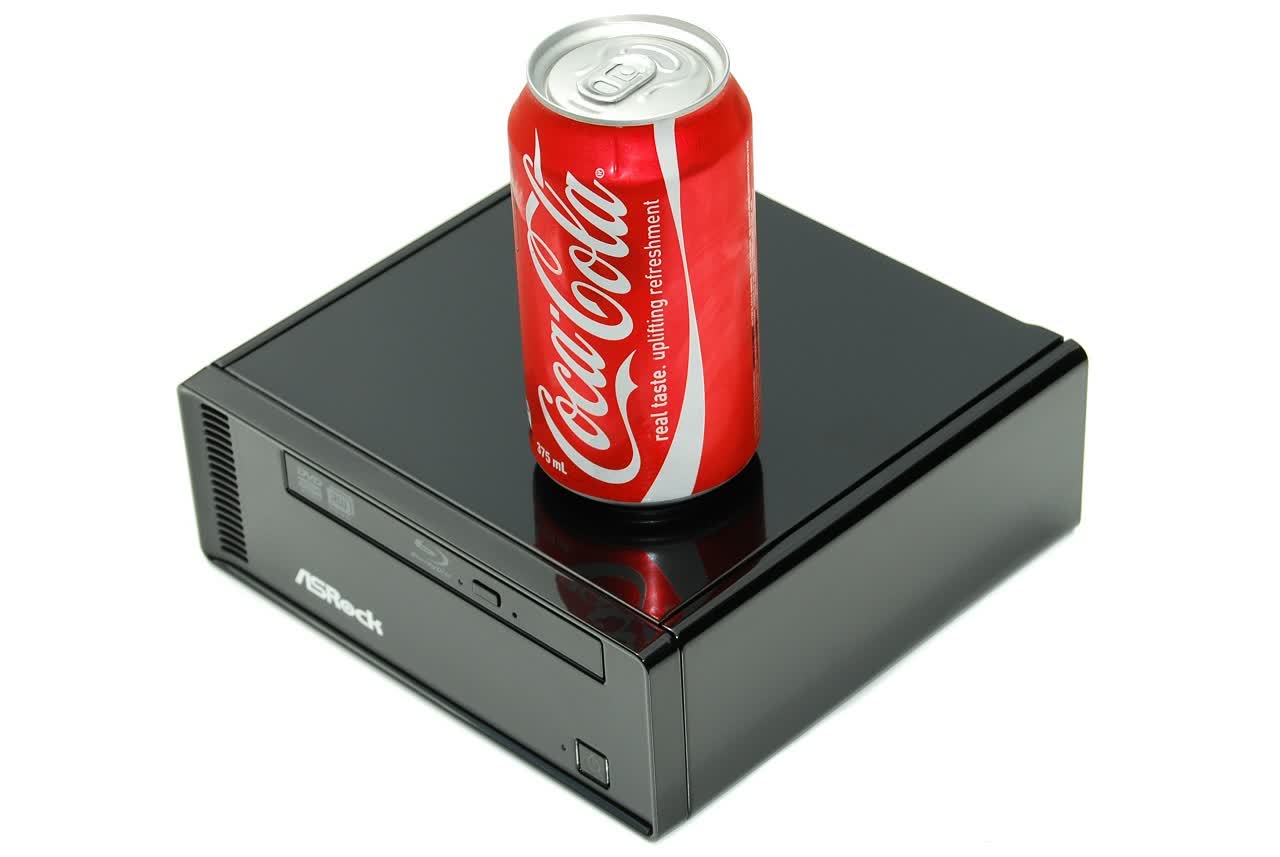Taking apart the Ion 330HT-BD
We were keen to take a look inside Ion 330HT-BD. Much like the exterior, everything was very tidy under the hood. Asrock designed a neat cable system for delivering power and data cables to the optical and hard disk drive. Mounted above the motherboard we found a Seagate Momentus 5400.6 2.5" 320GB hard drive, along with the Sony Optiarc BC-5500S Blu-Ray combo drive.
This drive supports 2x Blu-Ray read speeds and 24x CD read speeds. The maximum write speed for DVD+/-R media is 8x and 4x for DVD+/-R DL and DVD+/-RW media, while CD-R media can be burnt at 16x and CD-RW media at 10x. The drive features a 4.5MB buffer with access times of 320ms for Blu-Ray, 200ms for DVDs and 190ms for CDs.


Apart from a dual-core Intel Atom 330 processor clocked at 1.6GHz and the Nvidia Ion graphics chip, we found a few other interesting components residing in the AMCP7A-ION motherboard.

There's a pair of DDR2 SO-DIMM slots populated with 1GB Elixir DDR2-800 modules for a total capacity of 2GB. Upgrading the Ion 330HT-BD's memory will have you doing away with this memory and replacing it with two 2GB modules at a cost of around $40 - $50 each.

On the network front the 330HT-BD uses the Realtek RTL8211C(L) Gigabit Ethernet controller along with an Atheros 802.11 b/g/n Wireless LAN PCI Express Half Mini Card. Although the former uses the old PCI bus, throughput won't be severely limited as there are few devices sharing it.


Asrock has also stuck with Realtek for audio, using their tried and true ALC890B 8-channel audio codec, while adopting the Nuvoton NCT6775F IC Asrock has achieved the EuP2.0 standard which indicates that the total AC power consumption of the system is under 0.5W when turned off.

The Ion 330HT-BD is even capable of supporting RAID 0 and RAID1 when installing a secondary 2.5" hard drive. That's an impressive feature for such a tiny device. While Asrock didn't provide much guidance as to how would one go about installing a second drive, we were able to work it out with a little effort.
The drive in question must be mounted under the primary drive. However, in order to do so the optical drive and primary hard drive will have to be removed from the mounting bracket first. Asrock also included a cable that connects from a special power connection on the motherboard to the second hard drive.
Ultimately this opens the possibility of purchasing a pair of WD Scorpio Blue 640GB hard drives, configure them for RAID0, and getting over a terabyte of fast storage inside the same little box.

The cooling setup is typical for an Atom system. The CPU is cooled via a small silver aluminum heatsink. This heatsink is actively cooled via a tiny 25mm fan, while the Nvidia MCP79 chipset is passively by a much larger heatsink. This combination manages to keep the Ion 330HT-BD both quiet and cool.
